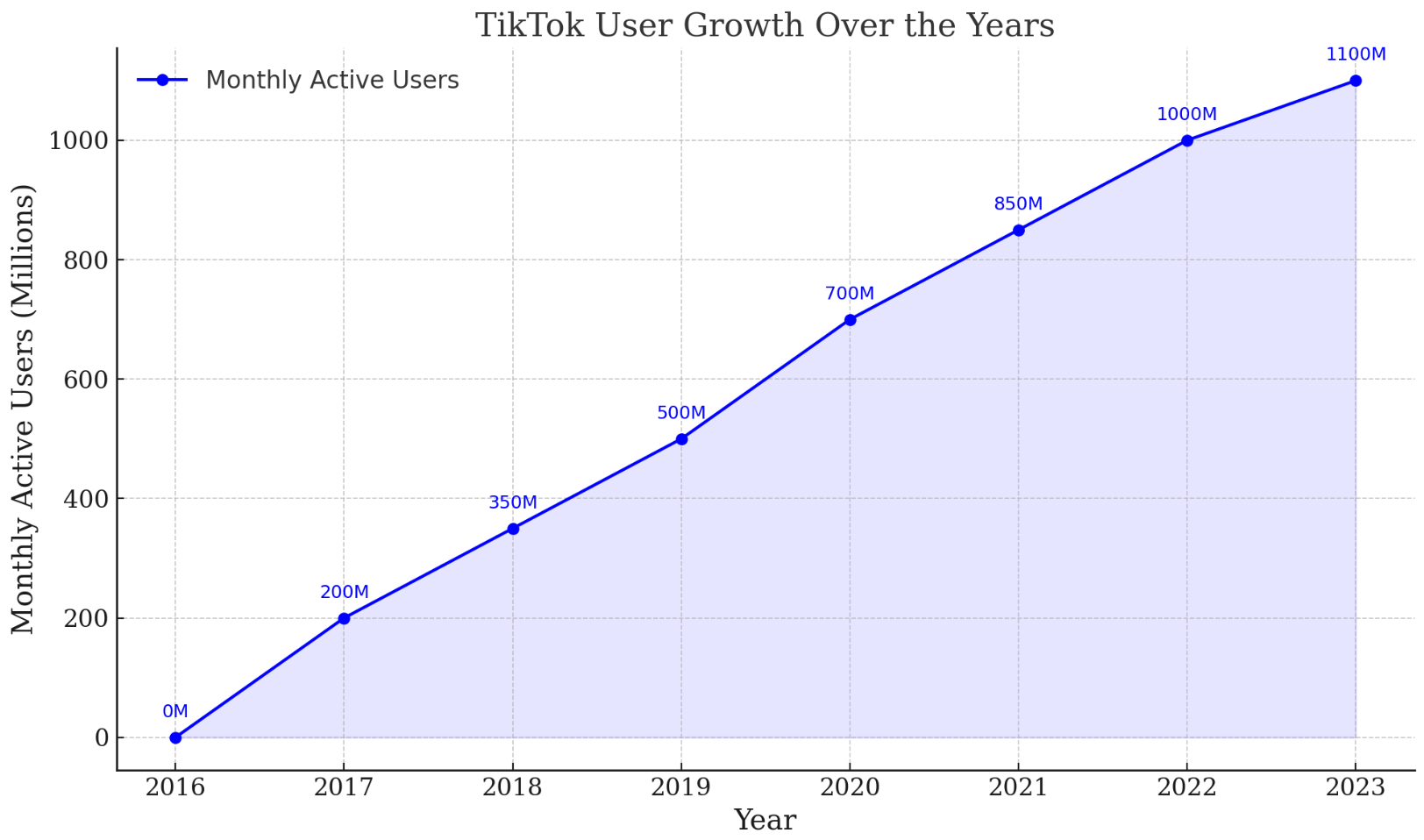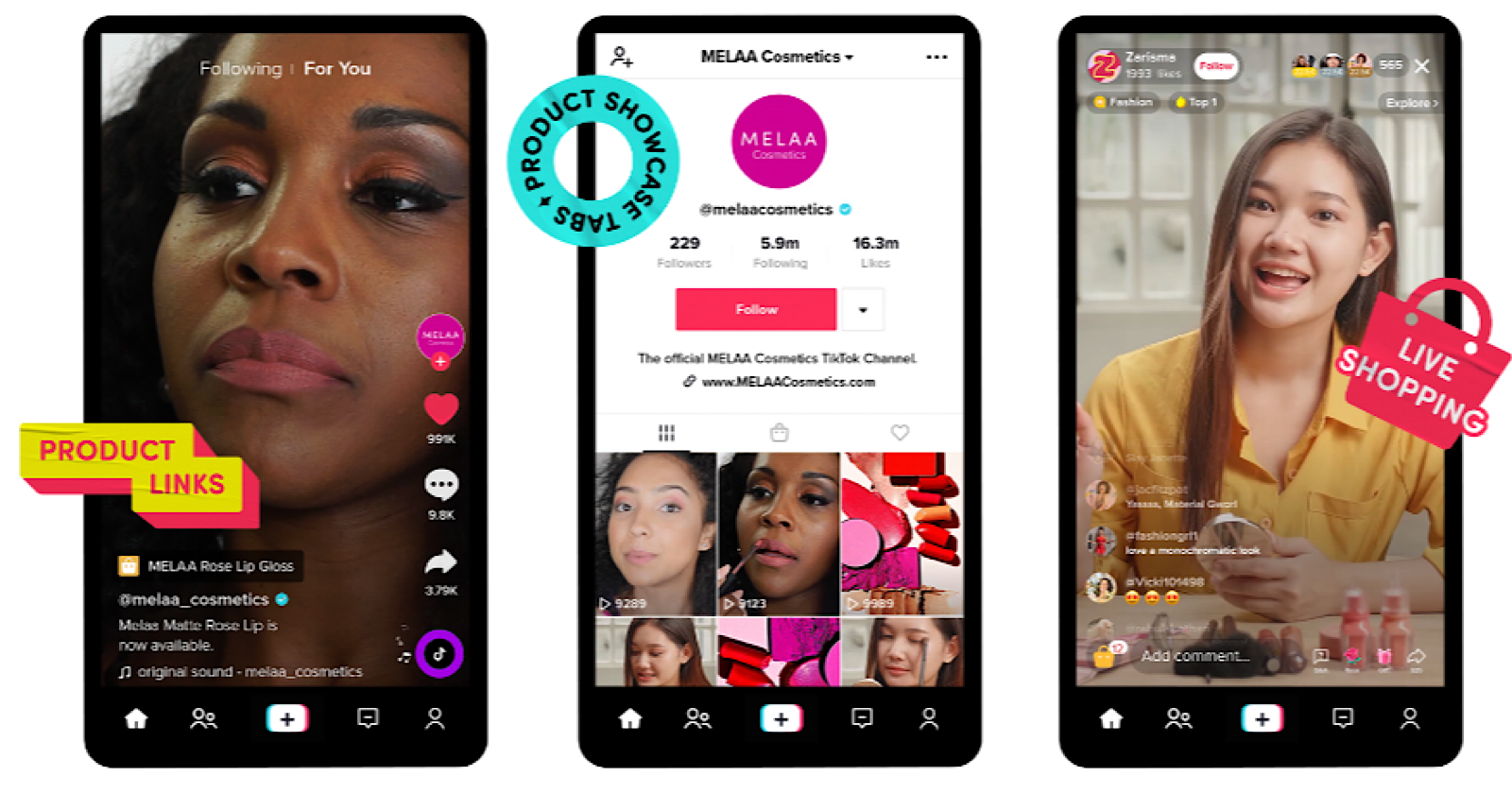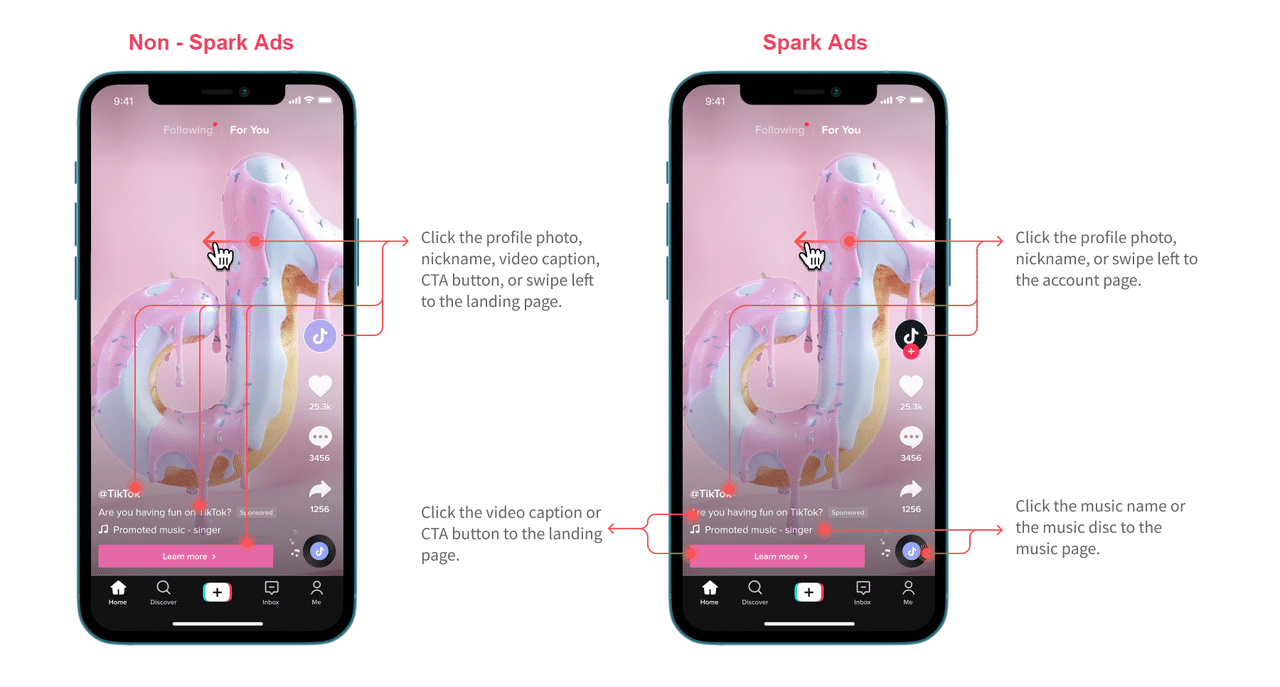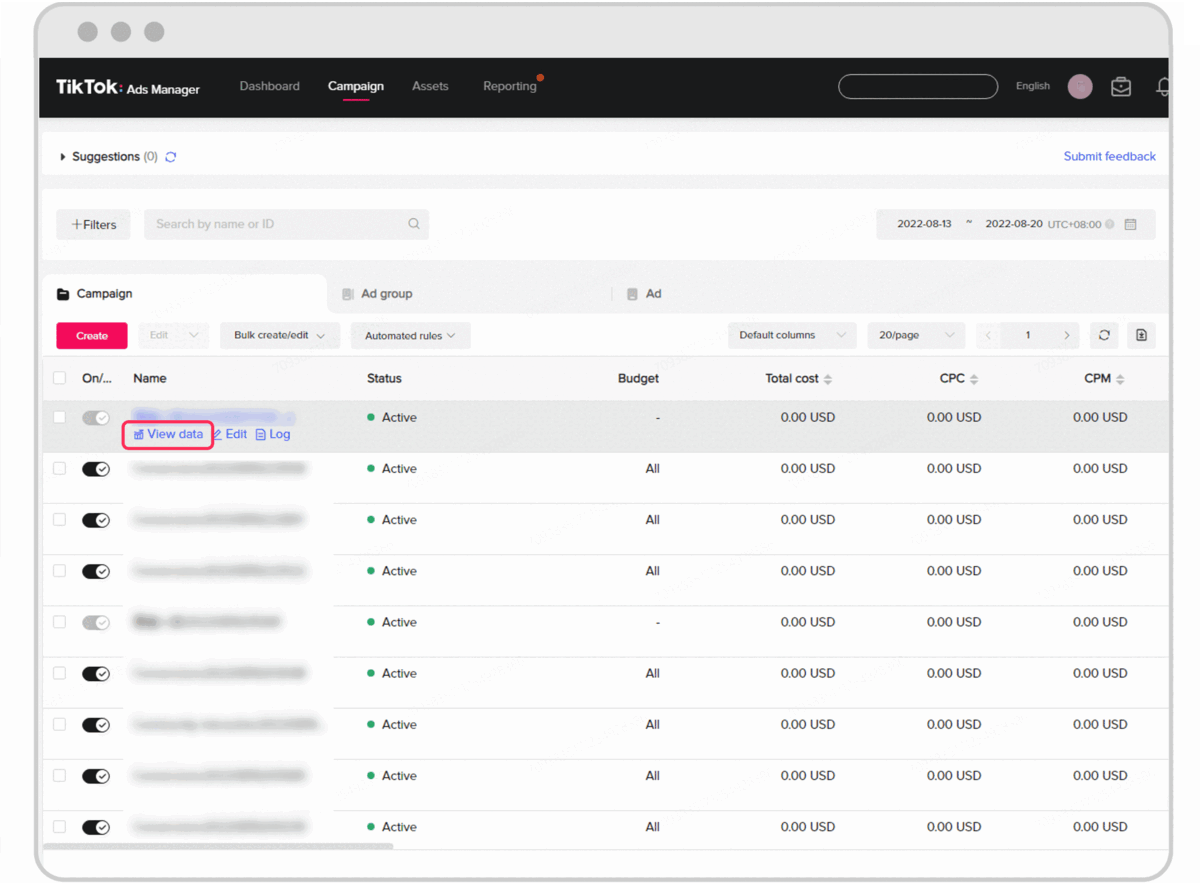You open up TikTok, and you're instantly bombarded with a cascade of short, entertaining videos that keep you glued to your screen. But, as a SaaS marketer, you can't help but wonder, "How can I tap into the power of TikTok to drive brand awareness and user engagement for my software as a service?"

Well, my friend, you've come to the right place. In this comprehensive guide, we're going to pull back the curtain and reveal the secrets of using TikTok to supercharge your SaaS marketing efforts. We'll start by examining why TikTok is a game-changer for SaaS marketers and then dive deep into the nitty-gritty of setting up your account, creating a content strategy that captivates your audience, leveraging TikTok ads, and measuring your success.
So, are you ready to embark on this TikTok marketing adventure? Let's go!

Why TikTok Matters for SaaS Marketing
TikTok isn't just for dance challenges and cute animal videos. The platform has evolved into a valuable marketing channel for businesses of all sizes, including SaaS companies. Here are a few reasons why TikTok matters for SaaS marketing:
1. Massive, engaged audience
TikTok boasts a whopping 1 billion monthly active users , with users spending an average of 52 minutes per day on the app. This massive, engaged audience presents a significant opportunity for SaaS marketers to increase their brand exposure and tap into a new user base.

2. Early mover advantage
While TikTok has been around since 2016, it's still a relatively untapped marketing channel for many SaaS companies. This means there's less competition on the platform, and early adopters can benefit from a first-mover advantage to build brand awareness and user engagement.
3. High shareability and virality
TikTok's algorithm is designed to promote content that keeps users engaged, meaning that even small accounts have the potential to go viral. This high shareability makes it possible for SaaS marketers to create content that reaches a large audience without spending a fortune on advertising.
Getting Started: Setting Up Your TikTok Account
Before you can start leveraging TikTok for your SaaS marketing, you'll need to set up your account. Here's a step-by-step guide to get you started:
1. Download the app
Download the TikTok app on your iOS or Android device and sign up for a new account using your email address, phone number, or a third-party account like Google or Facebook.
2. Create a username
Choose a username that represents your SaaS brand and is easy to remember. Keep it consistent with your other social media handles to maintain a unified brand presence across platforms.
3. Switch to a Pro account
Once you've set up your account, go to your profile, tap the three dots in the top right corner, and navigate to "Manage Account." Here, you'll find the option to switch to a Pro account. Upgrading to a Pro account gives you access to TikTok Analytics, which provides valuable insights into your audience and content performance.
4. Add your profile information
Fill out your profile with a compelling bio, a high-quality profile picture or logo, and a link to your website or landing page. Your bio should be concise, on-brand, and include relevant keywords or hashtags to make it easier for users to find you.
5. Connect your other social media accounts
TikTok allows you to link your Instagram and YouTube accounts to your profile. This integration can help drive traffic to your other channels and create a cohesive online presence.
TikTok Marketing Checklist for SaaS
Use this checklist to ensure you have all the essentials covered to effectively market your SaaS business on TikTok.
Setup
- [ ] Download TikTok app and create brand account
- [ ] Set branded, consistent username
- [ ] Write compelling bio and include relevant keywords
- [ ] Add high-quality profile photo and header image
- [ ] Link website/landing page in bio
- [ ] Connect other social media accounts
- [ ] Switch to Pro account
Content Creation
- [ ] Research target audience interests and needs
- [ ] Develop content calendar with variety of formats
- [ ] Create videos showcasing product and use cases
- [ ] Produce educational, tip, and tutorial content
- [ ] Participate in trends, challenges, and duets
- [ ] Collaborate with relevant influencers
- [ ] Encourage UGC through branded hashtags
Advertising
- [ ] Test different ad formats (In-Feed, TopView, Hashtag Challenge)
- [ ] Set daily ad budget and bid strategy
- [ ] Target ideal demographics and interests
- [ ] Create ad eye-catching creatives (videos, images)
- [ ] Drive traffic to landing pages for conversions
Analytics & Optimization
- [ ] Define key performance indicators (KPIs)
- [ ] Track follower growth, engagement, conversions
- [ ] Review audience demographics and content analytics
- [ ] A/B test content, targeting, bids to optimize
- [ ] Refine strategy based on insights and ROI
Content Strategy: Crafting a Winning TikTok Formula
Now that your TikTok account is set up, it's time to create a content strategy that resonates with your target audience and drives engagement. Here are some tips to help you craft a winning formula:
1. Understand your audience
Research your target audience and create buyer personas to understand their pain points, needs, and interests. This information will help you create content that appeals to them and showcases the value of your SaaS solution.
2. Showcase your SaaS product
Create videos that highlight your product's features, benefits, and use cases. Use a mix of screencasts, animated videos, and live-action clips to keep your content fresh and engaging.
3. Share educational content
Offer value to your audience by sharing educational content such as tips, tricks, and tutorials related to your SaaS product or industry. This type of content positions your brand as a thought leader and helps build trust with potential customers.
4. Leverage user-generated content (UGC)
Encourage your customers to create their own TikTok videos featuring your product. Share these videos on your account to showcase social proof and promote a sense of community around your brand.
5. Collaborate with influencers
Partner with relevant influencers in your industry to create sponsored content or co-branded campaigns. Influencer collaborations can help you reach new audiences and increase credibility within your niche.
6. Participate in trends and challenges
Stay up-to-date with TikTok trends and challenges and find creative ways to participate that align with your brand. This can help you increase your visibility on the platform and connect with users in an authentic, engaging way.
TikTok Ads: Amplifying Your Brand Presence

While organic content is crucial for building an engaged audience on TikTok, leveraging the platform's advertising options can further amplify your brand presence and drive user engagement. TikTok offers a variety of ad formats for SaaS marketers:
1. In-Feed Ads
In-Feed Ads appear in users' "For You" feed and can be up to 60 seconds long. These ads are excellent for showcasing your SaaS product or sharing educational content to drive awareness and engagement.
2. Branded Hashtag Challenges
Branded Hashtag Challenges encourage users to create content using your branded hashtag, driving user-generated content and increasing visibility for your brand. These challenges often include a custom banner and a dedicated challenge page to showcase participating videos.
3. Branded Effects
Branded Effects are interactive, augmented reality (AR) filters and stickers that users can add to their videos. Creating a branded effect can help increase brand awareness and encourage user engagement with your SaaS product.
4. TopView Ads
TopView Ads are full-screen, immersive ads that appear when users first open the TikTok app. These high-impact ads are ideal for reaching a large audience and driving brand awareness.

TikTok Ad Specs Cheat Sheet
Use this cheat sheet as a handy reference for the recommended specifications when creating TikTok ads. Optimizing your creative assets based on these specs will help increase your ads' effectiveness.
In-Feed Video Ads
- Format: MP4 or MOV
- Aspect Ratio: 9:16
- Length: 3 to 60 seconds
- Frame Rate: 24 FPS
- Resolution: 1080x1920 pixels
In-Feed Image Ads
- File Types: JPG, JPEG, PNG
- Aspect Ratio: 9:16
- Dimensions: 720x1280 pixels
- Size: Less than 4MB
Text
- Title: 25 characters
- Body text: 200 characters
- Hashtags: 30 hashtags maximum
- Captions: 125 characters maximum
TopView Ads
- Video Length: 9 to 60 seconds
- Dimensions: 1920x1080 pixels
- Format: MP4 or MOV
Hashtag Challenges
- Hashtag: 30 characters maximum
- Challenge Title: 30 characters maximum
- Challenge Details: 100 characters maximum

Measurement: Tracking Success on TikTok

To understand the effectiveness of your TikTok marketing efforts, it's essential to track your performance metrics and adjust your strategy accordingly. Here are some key metrics to monitor and analyze:
1. Follower growth
Track your follower growth over time to gauge the success of your content strategy and audience-building efforts. A steady increase in followers indicates that your content is resonating with users and attracting new audience members.
2. Engagement metrics
Monitor engagement metrics such as likes, comments, shares, and average watch time to understand how users are interacting with your content. High engagement rates signal that your content is compelling and can help boost your visibility on the platform.
3. Hashtag performance
Analyze the performance of your branded hashtags and the hashtags you use in your content. This information can help you optimize your hashtag strategy to increase visibility and engagement.
4. Conversion metrics
Track conversion metrics such as click-through rate (CTR), landing page visits, and sign-ups or demo requests to measure the effectiveness of your TikTok ads and overall marketing efforts.
5. Return on ad spend (ROAS)
Calculate your return on ad spend (ROAS) to understand the profitability of your TikTok advertising campaigns. This metric can help you optimize your ad budget and make data-driven decisions about your advertising strategy.
6. TikTok Analytics
Utilize TikTok Analytics, available with your Pro account, to gain insights into your audience demographics, content performance, and overall account growth. Regularly reviewing this data can help you refine your content strategy and better target your audience.
Key Takeaways
TikTok presents a significant opportunity for SaaS marketers to drive brand awareness and user engagement, thanks to its massive, engaged audience and high shareability. To succeed on the platform, follow these key takeaways:
- Set up your TikTok account with a cohesive, on-brand profile and switch to a Pro account for access to TikTok Analytics.
- Craft a winning content strategy that showcases your SaaS product, offers educational content, leverages user-generated content, collaborates with influencers, and participates in trends and challenges.
- Amplify your brand presence by leveraging TikTok's advertising options, including In-Feed Ads, Branded Hashtag Challenges, Branded Effects, and TopView Ads.
- Measure your success on TikTok by tracking key metrics such as follower growth, engagement metrics, hashtag performance, conversion metrics, and return on ad spend.
By following this guide and implementing these best practices, you'll be well on your way to mastering TikTok as a powerful marketing tool for your SaaS business. So go forth, create engaging content, and watch your brand awareness and user engagement soar!
FAQ
What makes TikTok a valuable marketing channel for SaaS companies?
TikTok offers several benefits that make it a game-changer for SaaS marketing, including a massive and engaged audience, early mover advantage as an untapped channel, and high content shareability and virality. The platform gives SaaS brands an opportunity to increase brand exposure and tap into new potential users.
What should I include in my TikTok profile to set up my account?
Your TikTok profile should include a captivating bio, high-quality profile picture/logo, link to your website/landing page, and integration with other social media accounts. Choose an on-brand username and upgrade to a Pro account for access to TikTok Analytics.
How can I create an effective content strategy on TikTok for my SaaS brand?
Showcase your product, share educational content, leverage user-generated content, collaborate with influencers, and participate in trends/challenges. Understand your target audience and create content that appeals to their needs/interests. Maintain a consistent posting schedule and use relevant hashtags.
What type of content performs best on TikTok for SaaS brands?
Short videos showcasing product features/benefits, screencasts, animated explainers, tips/tutorials, and behind-the-scenes content tend to resonate well. Leverage trends and challenges creatively. Ensure content is entertaining and engaging.
How can I encourage UGC and work with influencers as a SaaS brand on TikTok?
Offer incentives for creating TikToks featuring your product. Share and repost UGC. Seek out influencers in your niche and offer free access to your product in exchange for sponsored content. Use relevant hashtags to get discovered.
What TikTok ad formats should I consider for promoting my SaaS business?
In-Feed Ads, Branded Hashtag Challenges, Branded Effects, and TopView Ads are great options. Test different formats to see what performs best for your goals and budget. Focus on driving awareness, engagement, and conversions.
What metrics should I track to measure the success of my TikTok marketing efforts?
Track follower growth, engagement rates, hashtag and UGC performance, conversion metrics like click-through-rate and sign-ups, as well as ROAS for ads. Use TikTok Analytics to understand your audience and content.
How much budget should I allocate for TikTok ads?
Start small and test different budgets to find the optimal balance between spend and return. Build an effective organic presence first before investing heavily in ads. Monitor ROAS closely and adjust budgets accordingly based on performance.
How can I optimize my TikTok hashtag strategy?
Research relevant hashtags used by competitors and influencers. Use a mix of popular hashtags and niche, targeted hashtags. Track performance to identify best performing hashtags. Stay on top of trending hashtags.
How often should I be posting new content on TikTok?
Posting 1-3 times per day is typically best, aiming for at least 5 posts per week minimum. Test different posting schedules to see what works best for your audience. Maintain consistency but avoid overposting and saturating your audience.






